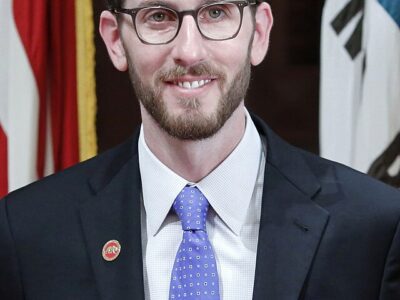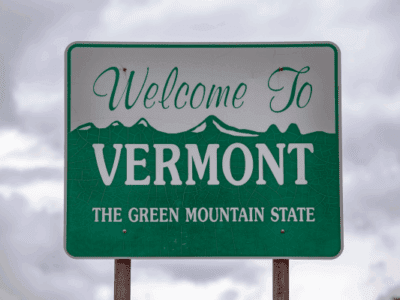One Reason the Election Matters for the Environment: The Supreme Court
Supreme Court appointments are among the most durable of Presidential actions. A fifty-year-old appointee could well be on the Supreme Court until 2040 or longer. As an AP story this morning points out, the election could dramatically change the balance on the Supreme Court:
With four justices in their seventies, odds are good that whoever is elected president in November will have a chance to fill at least one Supreme Court seat. The next justice could dramatically alter the direction of a court closely divided between conservatives and liberals.
Such a change could have a dramatic impact in many areas, among them environmental law. The current Court is closely divided. For instance, the Supreme Court decided by a 5-4 margin that EPA had the power to regulate greenhouse gases.
One key area involves access to the courts. Many of the Court’s decisions on standing are 5-4 in either direction — an important issue since it determines whether citizen groups have the right to sue, or whether judicial review will only be available to regulated businesses.
Another key area involves property rights. Conservative groups like the Pacific Law Foundation have campaigned to overturn environmental regulations in the name of property rights. So far, this campaign has had only mixed results. But an additional conservative vote on the Court could shift the balance in favor of property owners at the expense of wetlands and endangered species.
Finally, federal regulation of the environment rests primarily on the commerce clause. As last year’s health care opinion shows, the Court is teetering on the edge of significant cutbacks in federal power. The most immediate victims again could be wetlands and endangered species, but an aggressive conservative majority might also go after parts of the Clean Air Act.
Changes in the Court also matter in less dramatic ways. The Court often reviews actions by EPA or the Department of the Interior that are challenged on statutory grounds, with the environment often losing out in recent cases. An additional appointment could sway these decision one way or another.
In short, this election will help shape the government’s ability to protect the environment, not just for the next four years, but for decades to come.
Reader Comments
8 Replies to “One Reason the Election Matters for the Environment: The Supreme Court”
Comments are closed.







“….But an additional conservative vote on the Court could shift the balance in favor of property owners at the expense of wetlands and endangered species…”
Dear Dan,
What is the right way to deal with the issue of the owner’s equity and taking private property for public purposes without compensation ?
Dear bqrq: The default test for a “taking” is whether a regulation unjustifiably impairs reasonable investment-backed expectations. I don’t have any problem with that test. But the Court has added bells and whistles that give special protections to property owners in certain situations, and I don’t agree with those.
“….But an additional conservative vote on the Court could shift the balance in favor of property owners at the expense of wetlands and endangered species…”
Dear Dan,
What is the right way to deal with the issue of the owner’s equity and taking private property for public purposes without compensation ?
Dear bqrq: The default test for a “taking” is whether a regulation unjustifiably impairs reasonable investment-backed expectations. I don’t have any problem with that test. But the Court has added bells and whistles that give special protections to property owners in certain situations, and I don’t agree with those.
Re: “public interest” standing, you may be interested to read the latest authority from your northern neighbor’s Supreme Court:
http://www.canlii.org/en/ca/scc/doc/2012/2012scc45/2012scc45.html
Essentially, Canadian judges are to apply a three-part test in exercising their discretionary authority to grant standing:
1) whether the case raises a serious justiciable issue;
2) whether the party bringing the case has a real stake/genuine interest in the proceedings;
3) whether the proposed suit is a reasonable and effective means to bring the case to court.
The decision, Canada (Attorney General) v. Downtown Eastside Sex Workers United Against Violence Society, 2012 SCC 45, also contains a good overview for the rationale behind public interest standing, which from my limited understanding should hold some water in the U.S. as well (at para. 31):
“The principle of legality refers to two ideas: that state action should conform to the Constitution and statutory authority and that there must be practical and effective ways to challenge the legality of state action. This principle was central to the development of public interest standing in Canada.”
Note also that our equivalent to the US NRDC, Ecojustice, was an intervener in a case directed at challenging Canada’s prostitution laws, recognizing as you have in your post
the importance of the standing issue to environmental law.
Re: “public interest” standing, you may be interested to read the latest authority from your northern neighbor’s Supreme Court:
http://www.canlii.org/en/ca/scc/doc/2012/2012scc45/2012scc45.html
Essentially, Canadian judges are to apply a three-part test in exercising their discretionary authority to grant standing:
1) whether the case raises a serious justiciable issue;
2) whether the party bringing the case has a real stake/genuine interest in the proceedings;
3) whether the proposed suit is a reasonable and effective means to bring the case to court.
The decision, Canada (Attorney General) v. Downtown Eastside Sex Workers United Against Violence Society, 2012 SCC 45, also contains a good overview for the rationale behind public interest standing, which from my limited understanding should hold some water in the U.S. as well (at para. 31):
“The principle of legality refers to two ideas: that state action should conform to the Constitution and statutory authority and that there must be practical and effective ways to challenge the legality of state action. This principle was central to the development of public interest standing in Canada.”
Note also that our equivalent to the US NRDC, Ecojustice, was an intervener in a case directed at challenging Canada’s prostitution laws, recognizing as you have in your post
the importance of the standing issue to environmental law.
Dan said:
“… the Court has added bells and whistles that give special protections to property owners in certain situations, and I don’t agree with those…”
Dear Dan,
Many property owners strongly object to the way that property rights have been trampled and abused under current environmental regulatory practices. Our hope is that President Romney will dismantle the instruments of systematic regulatory abuse and appoint Justices to the Supreme Court (and other federal courts) who uphold and defend the constitutional rights of property owners and ordinary citizens. So far, his message seems to be working. It is time for our friends on the other side to get on board and move forward with the rest of us.
Have a good day and don’t forget to smile and be nice to others.
Dan said:
“… the Court has added bells and whistles that give special protections to property owners in certain situations, and I don’t agree with those…”
Dear Dan,
Many property owners strongly object to the way that property rights have been trampled and abused under current environmental regulatory practices. Our hope is that President Romney will dismantle the instruments of systematic regulatory abuse and appoint Justices to the Supreme Court (and other federal courts) who uphold and defend the constitutional rights of property owners and ordinary citizens. So far, his message seems to be working. It is time for our friends on the other side to get on board and move forward with the rest of us.
Have a good day and don’t forget to smile and be nice to others.